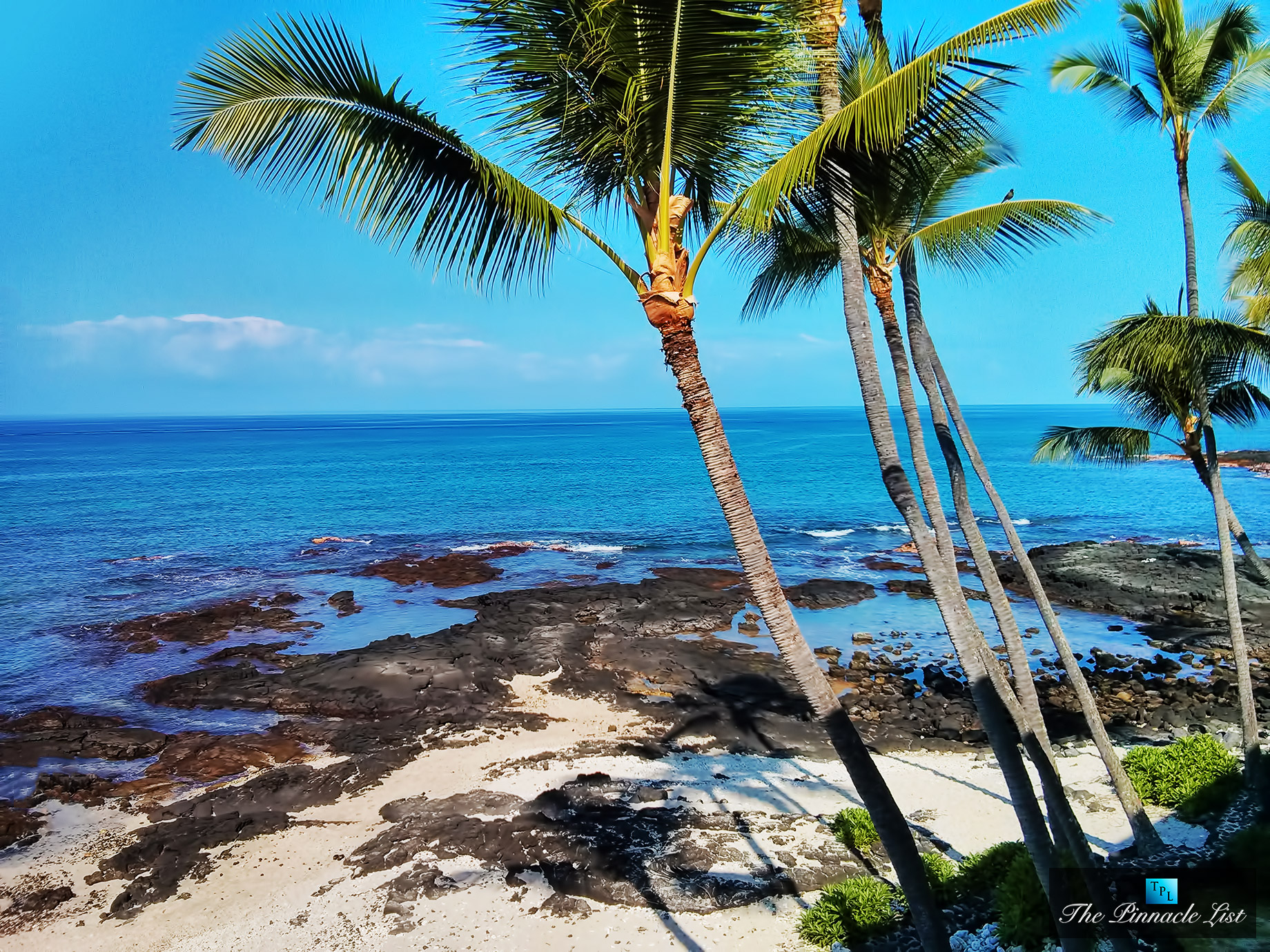Kona Coffee: Kona Hawaii

Kona coffee, renowned for its exquisite flavor and premium quality, has a rich history and unique characteristics that make it one of the most sought-after coffees in the world. Its cultivation, influenced by the specific microclimate and volcanic soil of the Kona region on the Big Island of Hawaii, contributes to its distinctive taste profile.
History of Kona Coffee Cultivation
Kona coffee’s journey began in the 18th century when Arabica coffee seeds were introduced to the Hawaiian islands. The Kona region, with its ideal growing conditions, quickly became a prime location for coffee cultivation. In the 19th century, coffee production in Kona flourished, becoming a significant part of the local economy. The region’s unique terroir, characterized by its volcanic soil, ample rainfall, and sunshine, played a pivotal role in shaping the flavor and quality of Kona coffee.
Growing Conditions and Environmental Factors
Kona coffee beans are grown on the slopes of Mauna Loa and Hualalai volcanoes, where the volcanic soil provides essential nutrients and excellent drainage. The region’s high altitude, ranging from 1,000 to 2,000 feet above sea level, creates a cooler climate that is ideal for coffee cultivation. The trade winds bring moisture from the Pacific Ocean, providing ample rainfall throughout the year. The combination of these factors contributes to Kona coffee’s unique flavor profile, characterized by its bright acidity, smooth body, and rich aroma.
Comparison with Other Coffee Varieties, Kona hawaii
Kona coffee’s distinct taste profile sets it apart from other coffee varieties worldwide. Compared to other Arabica coffees, Kona beans typically have a higher acidity, resulting in a brighter, more vibrant cup. The flavor profile is often described as having notes of chocolate, nuts, and fruit, with a smooth finish. In contrast to Robusta beans, which have a more bitter and earthy flavor, Kona coffee offers a more delicate and nuanced taste experience.
Grades of Kona Coffee
Kona coffee is graded based on bean size, defects, and overall quality. The grading system helps to differentiate between different levels of quality and price.
| Grade | Characteristics | Pricing | Availability |
|---|---|---|---|
| Extra Fancy | Largest, most perfect beans with no defects | Highest price | Limited availability |
| Fancy | Large, high-quality beans with minimal defects | High price | Limited availability |
| No. 1 | Good quality beans with some minor defects | Moderate price | More readily available |
| No. 2 | Lower quality beans with more defects | Lower price | Widely available |
Things to Do in Kona

Kona, on the Big Island of Hawaii, is a captivating destination offering a blend of natural beauty, cultural immersion, and exciting activities. Whether you’re seeking relaxation on pristine beaches, exploring volcanic landscapes, or delving into Hawaiian history, Kona has something for everyone.
Popular Tourist Attractions
Kona is home to a diverse range of attractions, from historical sites and natural wonders to cultural experiences. Here are some of the most popular:
- Kealakekua Bay: This historic bay is where Captain Cook first landed in Hawaii in 1778. Visitors can explore the Captain Cook Monument, take a boat tour, or go snorkeling in the clear waters.
- Pu’uhonua o Honaunau National Historical Park: This ancient Hawaiian place of refuge offers a glimpse into the island’s rich history. Visitors can explore the restored temple, petroglyphs, and learn about the cultural significance of the site.
- Hawaii Volcanoes National Park: Located about an hour drive from Kona, this park is home to active volcanoes, lava flows, and unique volcanic landscapes. Visitors can hike to the summit of Kilauea, observe the volcanic activity, and learn about the geology of the region.
- Mauna Kea Observatories: Perched atop Mauna Kea, one of the world’s most prominent dormant volcanoes, these observatories offer breathtaking views of the night sky. Visitors can take guided tours to learn about astronomy and explore the telescopes.
- Kaloko-Honokohau National Historical Park: This park showcases the rich cultural heritage of the Hawaiian people. Visitors can explore ancient fishponds, petroglyphs, and learn about traditional Hawaiian practices.
3-Day Itinerary
Here is a suggested itinerary for a 3-day trip to Kona, showcasing key activities and places to visit:
Day 1: Exploring Kona Town
- Morning: Start your day with a visit to the Kona Coffee Belt, where you can sample and purchase locally grown Kona coffee. Visit the Kona Coffee Cultural History Farm for a deeper understanding of the coffee-making process.
- Afternoon: Head to the Kailua-Kona Pier, a popular spot for fishing, watching the sunset, and enjoying the ocean breeze. Explore the nearby shops and art galleries.
- Evening: Enjoy a delicious dinner at one of the many restaurants in Kona town, offering fresh seafood and local cuisine. Consider attending a luau for a taste of Hawaiian culture and entertainment.
Day 2: Adventure on the Water
- Morning: Embark on a snorkeling or scuba diving adventure in the crystal-clear waters of Kealakekua Bay. Explore the vibrant coral reefs and encounter colorful marine life.
- Afternoon: Go whale watching during the winter months (November to May), when humpback whales migrate to Hawaii’s waters. Witness these magnificent creatures breaching and playing in the ocean.
- Evening: Relax on the beach, enjoy a sunset cocktail, or dine at a waterfront restaurant. Consider taking a sunset cruise for a romantic experience.
Day 3: Exploring the Big Island
- Morning: Drive to Hawaii Volcanoes National Park and explore the volcanic landscapes, including the Kilauea caldera, lava flows, and Thurston Lava Tube. Hike to the summit of Kilauea for breathtaking views.
- Afternoon: Visit the Mauna Kea Observatories and learn about astronomy. Take a guided tour to explore the telescopes and observe the night sky.
- Evening: Enjoy a farewell dinner in Kona town, reflecting on your unforgettable experience on the Big Island.
Insider Tips
- Local Food: Indulge in fresh seafood, especially poke (raw marinated fish), and traditional Hawaiian dishes like kalua pig and poi. Try the Kona Brewing Company for local craft beers.
- Shopping: Browse the unique shops in Kona town for souvenirs, local crafts, and Hawaiian clothing. Visit the farmers’ markets for fresh produce and local products.
- Entertainment: Attend a luau for a taste of Hawaiian culture, including music, dance, and traditional food. Enjoy live music at the many bars and restaurants in Kona town.
Snorkeling and Scuba Diving
Snorkeling and scuba diving in Kona offer an unforgettable underwater adventure. The clear waters and vibrant coral reefs are home to a diverse array of marine life, including colorful fish, sea turtles, and even manta rays.
- Kealakekua Bay: This protected bay is a popular spot for snorkeling and scuba diving, with calm waters and abundant marine life.
- Manta Ray Night Dive: Kona is renowned for its manta ray night dives, where you can witness these graceful creatures feeding on plankton under the moonlight.
Whale Watching
Whale watching in Kona is an awe-inspiring experience. From November to May, humpback whales migrate to Hawaii’s waters to breed and give birth. Visitors can take boat tours to witness these majestic creatures breaching, playing, and singing.
Hiking
Kona offers a variety of hiking trails, ranging from easy strolls to challenging climbs.
- Kealakekua Bay Trail: This easy trail offers stunning views of Kealakekua Bay and the surrounding coastline.
- Manta Ray Night Dive: Kona is renowned for its manta ray night dives, where you can witness these graceful creatures feeding on plankton under the moonlight.
Kona’s Culture and History

Kona’s rich cultural tapestry is woven from the threads of ancient Hawaiian traditions, the influence of Western settlers, and the vibrant spirit of its people. The region’s history is deeply intertwined with the land, its resources, and the stories passed down through generations.
Kona in Ancient Hawaiian Society
Kona’s significance in ancient Hawaiian society is evident in its rich archaeological record and the enduring cultural practices that continue to shape the region. Kona was a thriving center of agriculture, fishing, and trade, with a complex social structure and a deep connection to the land. The region’s fertile volcanic soils provided ideal conditions for growing crops like taro, sweet potatoes, and breadfruit, which formed the foundation of the Hawaiian diet.
Western Influence on Kona’s Culture
The arrival of Westerners in the 18th century marked a significant turning point in Kona’s history, bringing with it new technologies, religious beliefs, and social structures. Missionaries, who arrived in the early 19th century, played a crucial role in shaping Kona’s cultural landscape. They introduced Christianity, established schools, and promoted literacy in the Hawaiian language. The introduction of coffee cultivation in the late 19th century transformed Kona’s economy and contributed to the region’s development. The coffee industry created new opportunities for employment and spurred economic growth, but also led to social and cultural changes. The development of tourism in the 20th century further shaped Kona’s culture, bringing with it a influx of visitors and new economic opportunities.
Cultural Traditions and Festivals
Kona’s cultural heritage is celebrated through a variety of traditions and festivals that reflect the region’s history and values. The Merrie Monarch Festival, held annually in Hilo, is a major cultural event that showcases the best of Hawaiian music, dance, and crafts. The festival honors King David Kalakaua, the “Merry Monarch,” who was a strong advocate for Hawaiian culture and traditions. The Kona Coffee Cultural Festival, held annually in Kailua-Kona, celebrates the region’s coffee heritage and provides a platform for local artists, musicians, and food vendors. The festival features coffee tastings, demonstrations, and cultural performances.
The Significance of the Hawaiian Language
The Hawaiian language plays a vital role in preserving Kona’s cultural heritage. It is a powerful tool for connecting with the past, understanding the present, and shaping the future. The language is rich in history, stories, and cultural knowledge. It is a reminder of the resilience and adaptability of the Hawaiian people.
Kona hawaii – Kona, a paradise steeped in volcanic history and the rich aroma of Kona coffee, beckons with its languid charm. Yet, a mere hop across the island chain lies Kahului, kahului hawaii , a bustling gateway to the island of Maui, a vibrant counterpoint to Kona’s serenity.
While Kona whispers tales of ancient lava flows and sun-kissed beaches, Kahului pulsates with the energy of a thriving hub, a gateway to the island’s captivating beauty.
Imagine yourself strolling along Kona’s sun-drenched beaches, the scent of plumeria filling the air. But before you succumb to the allure of this tropical paradise, consider how to make your escape even more enchanting. A savvy traveler knows that seizing the right deals can elevate any adventure.
Look no further than alaska airlines buy one get one for a chance to double your Hawaiian bliss, ensuring your Kona journey is as memorable as the volcanic landscapes that surround it.
